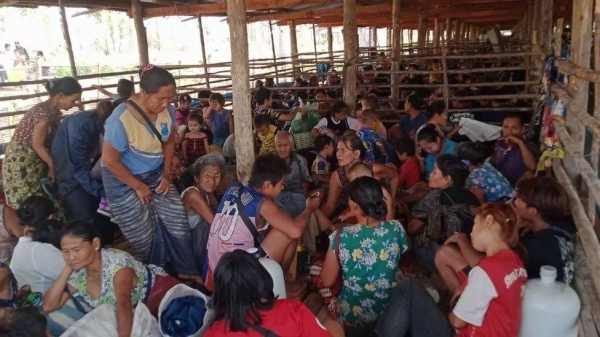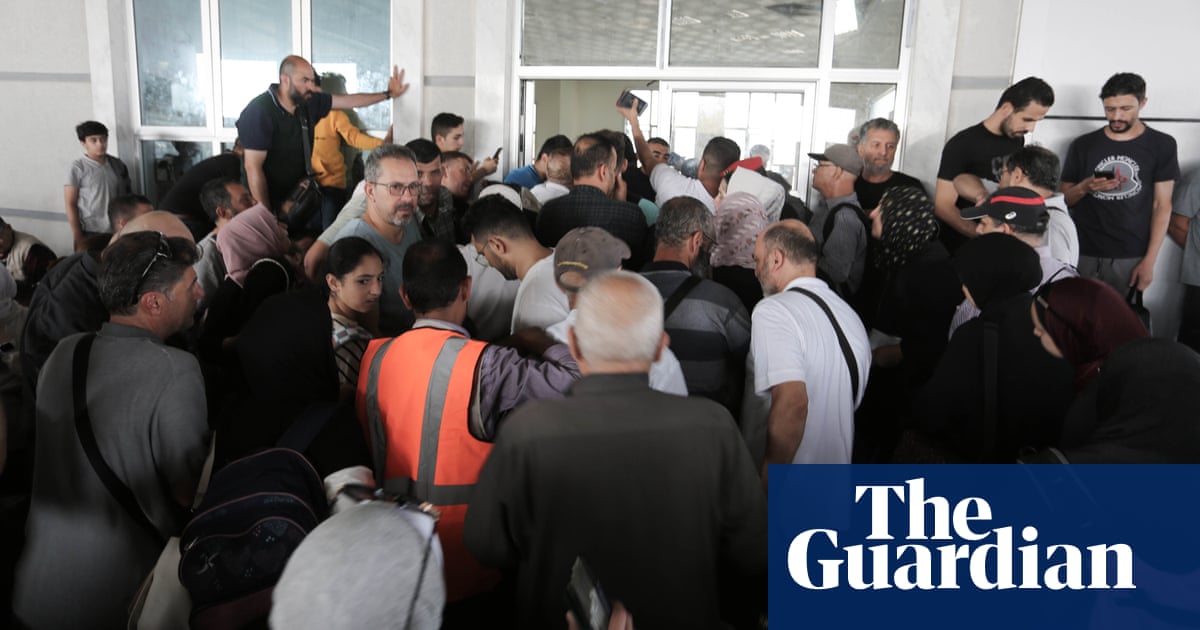
Myanmar’s escalating crisis is spilling across its borders, as thousands of refugees seek safe haven in India and Thailand in the wake of the military coup and bloody crackdowns on anti-coup protesters.
Authorities in both countries have tried to block new arrivals, fearing that a steady flow may become a flood, if unrest spreading through Myanmar worsens. A top UN official warned last week that the country is “on the verge of spiralling into a failed state” if action is not taken soon to stem the bloodshed.
The catastrophic human costs of the regime’s brutal policies is visible in crowded refugee camps in Bangladesh where hundreds of thousands of Rohingya refugees are living. Most fled after a military campaign that began in 2017, and have lived in limbo ever since.
Last week Thailand reportedly tried to push thousands of people fleeing Myanmar back across their border, after airstrikes on villages held by forces from the Karen ethnic minority.
Thai prime minister Prayut Chan-o-cha admitted the country was braced for more arrivals, the Associated Press reported. “We don’t want to have mass migration into our territory, but we will consider human rights, too,” he said. “We have prepared some places, but we don’t want to talk about the preparation of refugee centres at the moment. We won’t go that far.”
At least one Indian border state backed away from an order last month to “politely turn away” any refugees attempting to cross. The home ministry of Manipur said its instructions had been “misconstrued”.
A Covid outbreak in the Chinese border city of Ruili, which authorities said they had traced back to virus cases imported from Myanmar, was another reminder of the risks of large cross-border movements of people in a pandemic era.
The UN’s refugee agency has highlighted Myanmar’s neighbours’ “decades-long history” of protecting refugees from the country, and issued a pointed warning that it is illegal under international law to block people seeking asylum.
“Children, women and men fleeing for their lives should be given sanctuary,” said Gillian Triggs, assistant high commissioner for protection at the UNHCR. “As the situation in Myanmar deteriorates further, we call on states to continue their lifesaving humanitarian tradition of safeguarding the lives of all those forced to flee.”
In India’s Mizoram state no reminders have been needed. Politicians and local residents have welcomed with open arms more than a thousand people who have hiked through forests from Myanmar and waded across rivers to seek sanctuary.
A large number of them are policemen, who fled after refusing to obey orders to shoot at their own people during the protests, officials said.
At least 550 civilians have died, including 46 children, in protests that have shaken Myanmar’s major cities since the military took power in a February coup, a leading human rights group has said. More than 2,750 people have also been detained or sentenced, according to Myanmar’s Assistance Association for Political Prisoners.
Despite the crackdown, protesters have continued to pour onto the country’s streets, demanding the military respect the results of democratic elections held late last year, which gave opposition parties a landslide majority.
There is huge sympathy with both the protesters’ cause, and those who have fled over the border to Mizoram. Most refugees are members of the same ethnic group as local residents, known as Chin in Myanmar and Mizos in India.
“We are the same tribe. We share the same language and culture and religion – Christianity,” said Lalbin Sanga, assistant general secretary of the Mizo Students’ Union. “We all have family and blood ties because, although a border and different nationalities separate us, we are effectively the same people,”
On social media, indignant Mizos have shared pro-democracy slogans and freedom songs, and a series of fundraising street music concerts in the state capital Aizawl drew crowds of more than 3,000 and donations of 300,000 rupees (£3,000) to support refugees.
But these sentiments have put the local government on a collision course with the ruling Hindu nationalist Bharatiya Janata party in New Delhi. It has tried to categorise many of those seeking amnesty as illegal immigrants, and taken a hard line on deportations, including drawing controversy last week for trying to deport a lone teenage Rohingya girl, whose parents are refugees in Bangladesh, back to Myanmar.
In March the national ministry of home affairs ordered Mizoram chief minister Zoramthanga (who is known by one name) to check the influx of new arrivals and deport those who had already arrived.
He responded by asking home minister Amit Shah to change government policy. “I have told Amit Shah that the people who came from Myanmar are our brothers and sisters. We have family ties with most of them. Once they enter Mizoram, we have to give them food and shelter.”
Few of the refugees are any financial burden on the government, because of their extensive local ties. “The vast majority of those crossing into India don’t need help. They have moved into the homes of relatives and melted into the local population,” one local official said.
That may change if numbers grow. There are 500 kilometres of border between Mizoram and Chin and extensive ties mean large stretches are unfenced.
It has served as a safety valve for decades, with people fleeing an insurgency in India during the 1960s and 70s, then escaping from Myanmar after a previous military crackdown in 1989.
With protesters determined to keep challenging the government, and fears the situation in Myanmar could escalate into full-blown civil war, some in the region are already preparing for many new arrivals.
At least three armed groups from Myanmar’s ethnic minorities, which have long track records in guerrilla warfare against the central government, have vowed to join what they called the “spring revolution” if the crackdown continues.
The opposition are also working on an interim constitution which would include a “federal army” to replace the current military system. Although outnumbered, and outgunned, if the various opposition forces are able to come together effectively they could pose a significant challenge to the Tatmadaw, Myanmar’s military forces.
“The way things are going, I anticipate more people seeking refuge in Mizoram,” said Lawma Chhangte, president of the United for Democratic Myanmar NGO. “At the moment most of them are staying with relatives but we have started renting a few homes in case the numbers become too large for families here to manage.”











